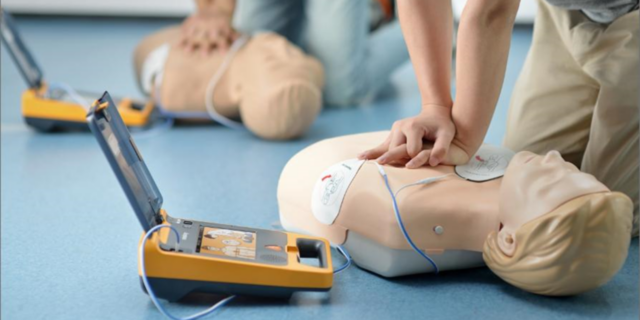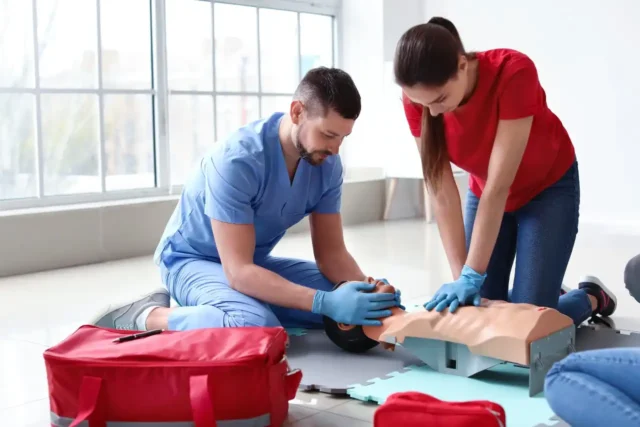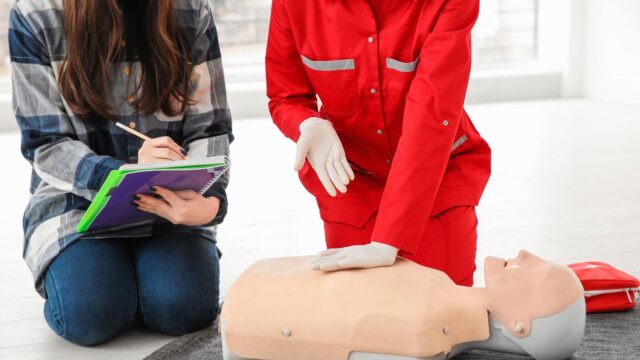
Imagine walking down a crowded street when suddenly, the person in front of you collapses. Confusion and panic ensue. Do you know what to do in this life-or-death situation? According to the American Heart Association, about 350,000 cardiac arrests occur outside of the hospital each year, and the survival rate is less than 10%. Most of these fatalities result from delays or absence of immediate, effective response. This pressing reality underscores the invaluable importance of immediate intervention during emergencies.
1. Definition of CPR and AED

CPR, or Cardiopulmonary Resuscitation, is an emergency procedure that involves chest compressions often combined with artificial ventilation to manually preserve intact brain function until further measures are taken to restore spontaneous blood circulation and breathing in a person experiencing cardiac arrest. On the other hand, an AED, or Automated External Defibrillator, is a device used to deliver a shock to the heart, helping it regain its normal rhythm. The coordination of these two measures can be instrumental in saving lives during critical moments.
2. Purpose of the Blog
The goal of this blog post is to emphasize the paramount role of CPR and AED training in saving lives during emergencies. We aim to illuminate how such training can empower ordinary individuals to become extraordinary lifesavers, providing the immediate response needed in many emergency situations. By the end of this post, we hope you’ll recognize the importance of CPR and AED training and feel inspired to learn these life-saving skills. While we’re going to cover the basics of CPR and AED in this text you should definitely learn more.
3. Importance of Immediate Response

In emergencies, every second counts. Immediate response can mean the difference between life and death. When cardiac arrest strikes, the heart stops beating, halting blood flow to the brain and other vital organs. Without swift intervention, brain damage or death can occur within minutes. Therefore, the ability to immediately perform CPR and utilize an AED is crucial. These actions can double, or even triple, a victim’s chances of survival, truly demonstrating the potency of immediate, informed response.
4. Transition
Recognizing the gravity of such situations and the life-saving potential of immediate action, let’s delve into how CPR and AED training can turn us from bystanders into lifesavers. The upcoming sections will expound on the benefits and accessibility of CPR and AED training, exploring how acquiring these skills not only empowers us individually but contributes significantly to overall community safety.
5. Benefits of CPR and AED Training

CPR and AED training equip individuals with the skills to act confidently and effectively in emergencies. Not only does it increase survival rates of cardiac arrest victims, but it also instills a sense of personal empowerment and social responsibility. This training can demystify medical emergencies and facilitate calm, focused responses in high-pressure situations. Furthermore, having more trained individuals in a community means increased chances of timely intervention. Ultimately, everyone benefits from having more trained individuals among us — it could make the difference between life and death.
6. Accessibility of CPR and AED Training
Fortunately, learning these life-saving skills is more accessible than you might think. Many organizations, including the American Heart Association, Red Cross, and various local community centers, offer CPR and AED training. There are even online courses for those who prefer a remote learning experience. Moreover, most courses are affordable and require only a few hours of your time — a small investment considering its potential return: saving a life.













